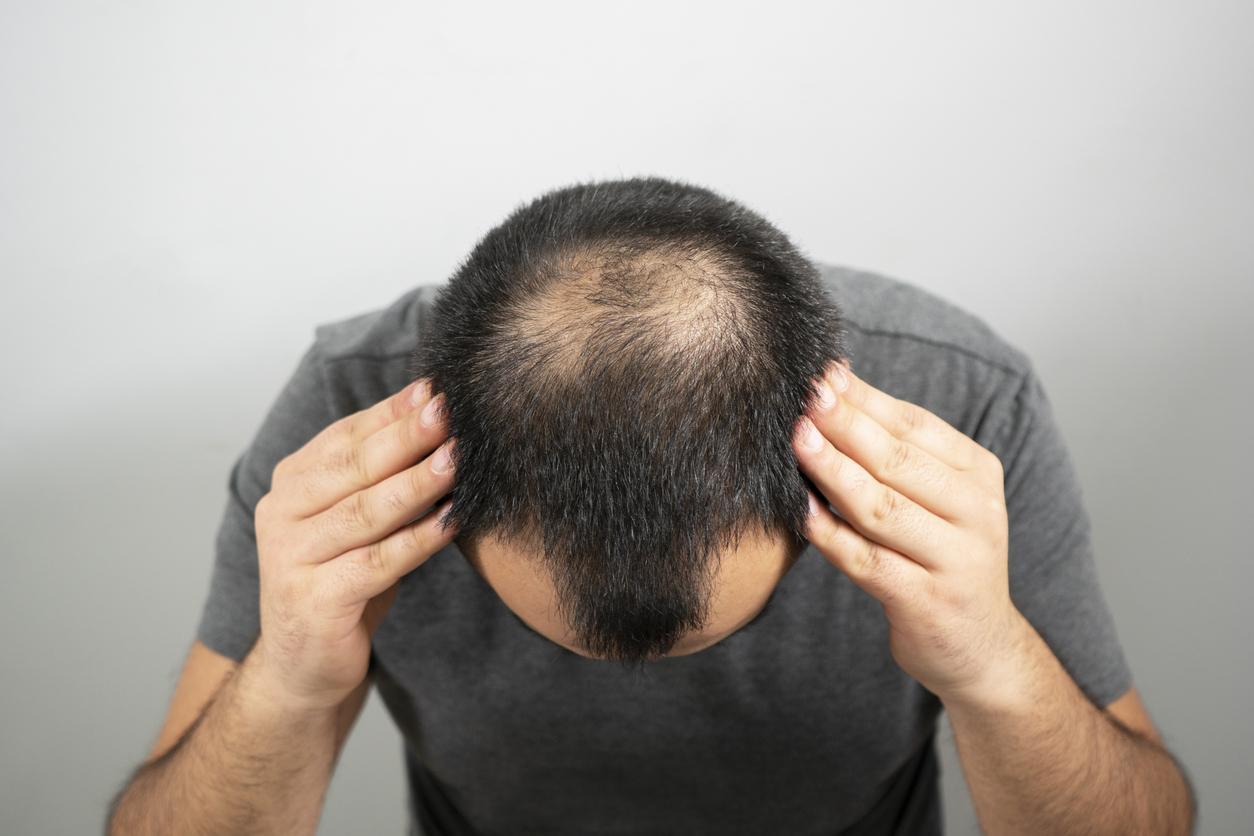Hair loss is a deeply personal issue for many men, and yet it’s surprisingly common. During Hair Loss Awareness Month, celebrated every August, it's worth taking a closer look at one of the most misunderstood drivers of hair loss in men: testosterone, and more specifically, dihydrotestosterone (DHT).

While most people associate testosterone with masculinity, strength, and sex drive, it also plays a complex role in your skin and hair. The connection between testosterone and hair loss isn’t as simple as “more testosterone equals more hair.” In fact, the opposite can sometimes be true.
Let’s unpack what the science says about testosterone, DHT, and balding, plus what men can do to regain control of their hair and health.
What Is DHT and How Is It Made?
DHT, or dihydrotestosterone, is an androgen, which is a type of sex hormone. It’s made when testosterone is converted by an enzyme called 5-alpha-reductase. Once converted, DHT binds more strongly than testosterone to androgen receptors in the body, especially in the skin, scalp, and prostate.
That’s where things get complicated. DHT is essential for male development, but it also plays a role in hair miniaturization, the shrinking of hair follicles that eventually leads to thinning and balding.
This is the biological process behind the most common cause of hair loss in men, male androgenetic alopecia, commonly known as male pattern hair loss. It’s also why testosterone and hair loss are closely linked in clinical research, even if high testosterone itself isn’t the direct culprit.
Baldness: Is More Testosterone Always Worse?
One of the most persistent myths is that bald men must have high testosterone. But the truth is more nuanced.
Studies show that men with male pattern baldness don’t necessarily have higher total testosterone levels. What matters more is how your body processes that testosterone. If your scalp is more sensitive to DHT, or if you produce more DHT locally due to increased 5-alpha-reductase activity, you may be more prone to hair loss.
This explains why baldness and testosterone aren’t always a 1:1 relationship. It’s not just the presence of testosterone that matters, but how it interacts with your genetics, enzymes, and hormone receptors.
Hair Thinning and Testosterone: The Role of Genetics
Hair thinning often begins in the temples or crown and progresses over time. In men genetically predisposed to DHT balding, hair follicles in specific areas of the scalp begin to shrink. This shortens the growth phase of the hair cycle, leading to finer strands that fall out more easily and are slower to grow back, if at all.

Testosterone itself isn’t the problem. In fact, healthy testosterone levels are important for your overall well-being, energy, muscle mass, and sexual health. But if you’re genetically sensitive to DHT, hair thinning may be one of the earliest visible signs of how your body responds to hormonal shifts.
DHT Blockers for Hair Loss: Do They Work, and Are There Side Effects?
Given DHT’s central role in male pattern hair loss, one of the most common treatment strategies is using DHT blockers. These medications, such as finasteride (Propecia), work by inhibiting the 5-alpha-reductase enzyme, reducing DHT production in the scalp.
According to a study on finasteride published in the Journal of the American Academy of Dermatology, men who took 1 mg of finasteride daily experienced increased hair counts and slowed hair loss compared to placebo. Results were noticeable at both one and two years of treatment.

While generally well-tolerated, DHT blockers do have side effects to consider. For example, some men report decreased libido and erectile dysfunction. While these effects are not universal, they highlight the importance of weighing benefits and risks in consultation with a qualified healthcare provider.
Topical treatments like minoxidil may also be used in combination with oral medications for a dual approach.
Diagnostic Clues: Could DHT Testing Help?
In cases where male pattern baldness is suspected, measuring DHT levels in the blood may provide helpful information, especially if there’s also concern about hormone imbalance or testosterone replacement therapy.
A 2014 article published in Advances in Dermatology and Allergology suggested that DHT testing may assist in confirming suspected androgenetic alopecia, though further studies are needed to standardize its clinical use.
If you’re unsure whether your hair loss is caused by DHT, low testosterone, stress, nutritional deficiencies, or something else, a hormone panel ordered by a specialist can help guide next steps.
You can also click here to order an at-home men’s health panel. While it doesn’t test for DHT, it does test for eight other key men’s health indicators to help you get a clearer understanding of your hormone health.
Focus on What You Can Control
Not all hair loss is preventable. Genetics, aging, and hormone sensitivity play powerful roles. If you’re noticing changes in your hair and experiencing signs of testosterone imbalance like fatigue, low libido, or mood swings, it’s worth exploring whether your hormones are part of the picture.
Here’s what to keep in mind:
- Testosterone and hair loss are linked primarily through DHT, not total testosterone levels.
- You can experience hair thinning from testosterone sensitivity even with average hormone levels.
- DHT blockers can help, but they come with potential side effects.
Hair Loss Awareness Month is a good reminder that your health is interconnected, and hair can be an outward sign of what’s going on internally. If you’re worried about hair loss, talk to your doctor about your treatment options.
Want more insight on men’s health and testosterone? Sign up for our newsletter to get updates straight to your inbox.
.svg)


.svg)






